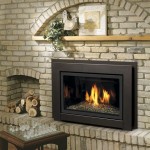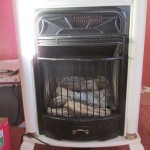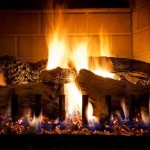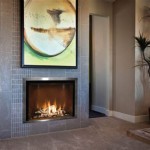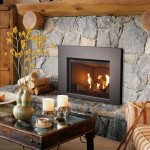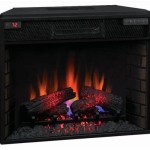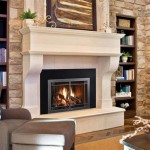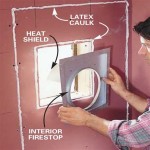Prefabricated Indoor Wood Burning Fireplace Kits: A Comprehensive Guide
Prefabricated indoor wood burning fireplace kits offer a compelling alternative to traditional masonry fireplaces. These kits provide a convenient and potentially cost-effective way to add the ambiance and warmth of a wood-burning fire to a home. This article explores the various aspects of prefabricated fireplace kits, covering their advantages, disadvantages, installation considerations, safety precautions, and key features to consider when making a purchase.
A prefabricated fireplace kit, as the name suggests, is a pre-engineered and manufactured fireplace system. It consists of a firebox, chimney components, and often, decorative elements. These components are designed to fit together seamlessly, simplifying the installation process compared to building a fireplace from scratch. The firebox is typically constructed of heavy-gauge steel or cast iron, ensuring durability and heat resistance. The chimney components are typically a double or triple-walled metal system designed for safe venting of combustion byproducts.
The appeal of prefabricated kits lies in their relative ease of installation and potential cost savings. Building a traditional masonry fireplace requires skilled labor, extensive materials, and can be a time-consuming project. Prefabricated kits can often be installed by a contractor or a skilled homeowner, significantly reducing labor costs. Additionally, the controlled manufacturing process of these kits can result in consistent quality and predictable performance.
Advantages of Prefabricated Fireplace Kits
Prefabricated fireplace kits offer several distinct advantages over traditional masonry fireplaces. These advantages contribute to their growing popularity among homeowners seeking a convenient and efficient way to enjoy the benefits of a wood-burning fire.
Cost-Effectiveness: One of the primary advantages is their cost-effectiveness. The pre-engineered design and simplified installation reduce labor costs significantly. The materials used in the kits are often less expensive than the bricks, mortar, and other materials required for a masonry fireplace. Furthermore, the streamlined manufacturing process allows for economies of scale, further reducing the overall cost.
Ease of Installation: The installation process is considerably less complex than building a traditional fireplace. The kits come with detailed instructions and the components are designed to fit together precisely. This reduces the reliance on specialized masonry skills and can shorten the installation time significantly. In many cases, a contractor with general construction experience can handle the installation.
Design Flexibility: While the overall structure is predetermined, prefabricated kits offer a degree of design flexibility. Many manufacturers offer a variety of firebox sizes, styles, and decorative options. This allows homeowners to customize the appearance of the fireplace to match their décor. Options for facing materials, mantels, and surrounds further enhance the design possibilities.
Consistent Performance: Because they are engineered and manufactured in a controlled environment, prefabricated fireplaces tend to offer more consistent and predictable performance than site-built fireplaces. The firebox is designed to maximize heat output and minimize smoke spillage. The chimney components are designed for optimal draft, ensuring efficient venting of combustion gases. This consistent performance can lead to improved heating efficiency and a more enjoyable fireplace experience.
Safety Features: Prefabricated fireplaces are designed with safety in mind. The firebox and chimney are constructed of fire-resistant materials, and the kits often include safety features such as spark arrestors and over-temperature sensors. These features help to prevent fires and ensure safe operation. Modern units often incorporate features to control air intake which improves combustion efficiency and reduces the risk of creosote buildup.
Disadvantages of Prefabricated Fireplace Kits
While prefabricated fireplace kits offer numerous benefits, there are also some potential disadvantages to consider before making a purchase. Understanding these limitations is crucial for making an informed decision and ensuring satisfaction with the final product.
Limited Customization: While some design flexibility exists, the overall customization options are limited compared to a custom-built masonry fireplace. The firebox size and chimney configuration are largely predetermined, restricting the ability to create a truly unique and personalized design. The facing and surround options available may also be limited to the manufacturer's offerings.
Lifespan Considerations: The lifespan of a prefabricated fireplace may be shorter than that of a well-constructed masonry fireplace. The steel or cast iron firebox can corrode over time, especially if exposed to moisture. The chimney components may also require replacement after a certain number of years. Regular maintenance and proper usage can help to extend the lifespan of the fireplace, but it is important to be aware of its potential limitations.
Aesthetic Limitations: Some may find the aesthetic of a prefabricated fireplace less appealing than that of a traditional masonry fireplace. The metal firebox and manufactured look may not have the same charm and character as a brick or stone fireplace. However, many manufacturers offer decorative surrounds and facing materials that can help to enhance the aesthetic appeal and create a more traditional look.
Heat Retention: Prefabricated fireplaces generally do not retain heat as well as masonry fireplaces. Masonry fireplaces absorb heat from the fire and radiate it into the room for a longer period. Prefabricated fireplaces tend to heat up quickly, but they also cool down more quickly after the fire is extinguished. This can be a disadvantage if the primary goal is to provide sustained heat to the room.
Potential for Draft Issues: While prefabricated chimneys are designed for optimal draft, issues can still arise if the installation is not done correctly or if the chimney is not properly maintained. Blockages in the chimney, such as bird nests or creosote buildup, can restrict airflow and cause smoke to back up into the room. Proper installation and regular chimney cleaning are essential to prevent these issues.
Key Considerations When Choosing a Prefabricated Fireplace Kit
Selecting the right prefabricated fireplace kit requires careful consideration of several factors. Evaluating these factors will ensure that the chosen kit meets the homeowner's needs and provides a safe and enjoyable fireplace experience.
Size and Heating Capacity: The size of the firebox and the heating capacity of the fireplace should be appropriate for the size of the room. A fireplace that is too small will not provide adequate heat, while a fireplace that is too large can overheat the room. Manufacturers typically provide BTU (British Thermal Unit) ratings for their fireplaces, which can be used to estimate the heating capacity. Consider the square footage of the room and the desired level of heating when selecting the appropriate size.
Firebox Material and Construction: The firebox material and construction are crucial for durability and safety. Heavy-gauge steel or cast iron fireboxes are generally the most durable and provide the best heat retention. Look for fireboxes that are fully welded and have reinforced seams. The firebox should also be properly insulated to prevent heat loss and protect surrounding materials from overheating.
Chimney System: The chimney system is a critical component of the fireplace and must be compatible with the firebox. Double or triple-walled metal chimneys are the most common and provide good insulation and draft. Ensure that the chimney system is UL-listed and meets all applicable building codes. The chimney height and diameter should be appropriate for the firebox size and the location of the fireplace. Follow the manufacturer's instructions for chimney installation and maintenance.
Safety Features: Look for fireplaces that include safety features such as spark arrestors, over-temperature sensors, and air control mechanisms. Spark arrestors prevent sparks from escaping the chimney and potentially igniting nearby materials. Over-temperature sensors will shut down the fireplace if it gets too hot, preventing damage to the firebox and surrounding materials. Air control mechanisms allow you to regulate the airflow to the fire, improving combustion efficiency and reducing creosote buildup.
Aesthetic Design and Customization Options: Choose a fireplace that complements the décor of the room and provides the desired aesthetic appeal. Consider the available facing materials, mantels, and surrounds. Some manufacturers offer a wide range of options, while others have limited choices. Look for fireplaces with clean lines and a modern design, or choose a more traditional style with ornate details. Ensure that the customization options are compatible with the firebox and chimney system.
Compliance with Building Codes: Before purchasing a prefabricated fireplace kit, it is essential to ensure that it complies with all applicable building codes and regulations. Local building codes may specify requirements for fireplace installation, chimney height, clearances to combustible materials, and other safety measures. Contact your local building department or a qualified contractor to determine the specific requirements in your area. Failure to comply with building codes can result in fines or delays in the installation process.
Warranty and Support: Check the warranty offered by the manufacturer and ensure that it covers the firebox, chimney system, and other key components. A comprehensive warranty provides peace of mind and protects against potential defects or malfunctions. Also, consider the availability of technical support and customer service. A reputable manufacturer will offer prompt and helpful assistance with any questions or concerns you may have.
Professional Installation: While prefabricated fireplace kits are designed for relatively easy installation, it is still recommended to hire a qualified contractor to handle the installation. A professional contractor will have the necessary experience and expertise to ensure that the fireplace is installed correctly and safely. They will also be familiar with local building codes and regulations. Professional installation can help to prevent potential problems such as smoke spillage, draft issues, and fire hazards.
By carefully considering these factors, homeowners can select a prefabricated fireplace kit that meets their needs and provides a safe, efficient, and aesthetically pleasing addition to their home. A thorough evaluation of the advantages, disadvantages, and key features will ensure a satisfying and long-lasting fireplace experience.

Mason Lite Indoor Outdoor Wood Burning Fireplace Kit Patio Furnishings

Mason Lite Indoor Outdoor Wood Burning Fireplace Kit Patio Furnishings

Masonry Fireplace Kits Prefabricated Mason Lite

Masonry Fireplace Kits Prefabricated Mason Lite

Zero Clearance Vs Prefabricated Fireplace Full Service Chimney

Prefab Linear Fireplaces Expert Fireplace Installation In Your Home

Mason Lite Indoor Outdoor Wood Burning Fireplace Kit Patio Furnishings

Masonry Fireplace Kits Prefabricated Mason Lite

The Best Wood Burning Fireplace Inserts Or Stoves Ecohome

36 Inch Real Masonry Wood Burning Fireplace
Related Posts

